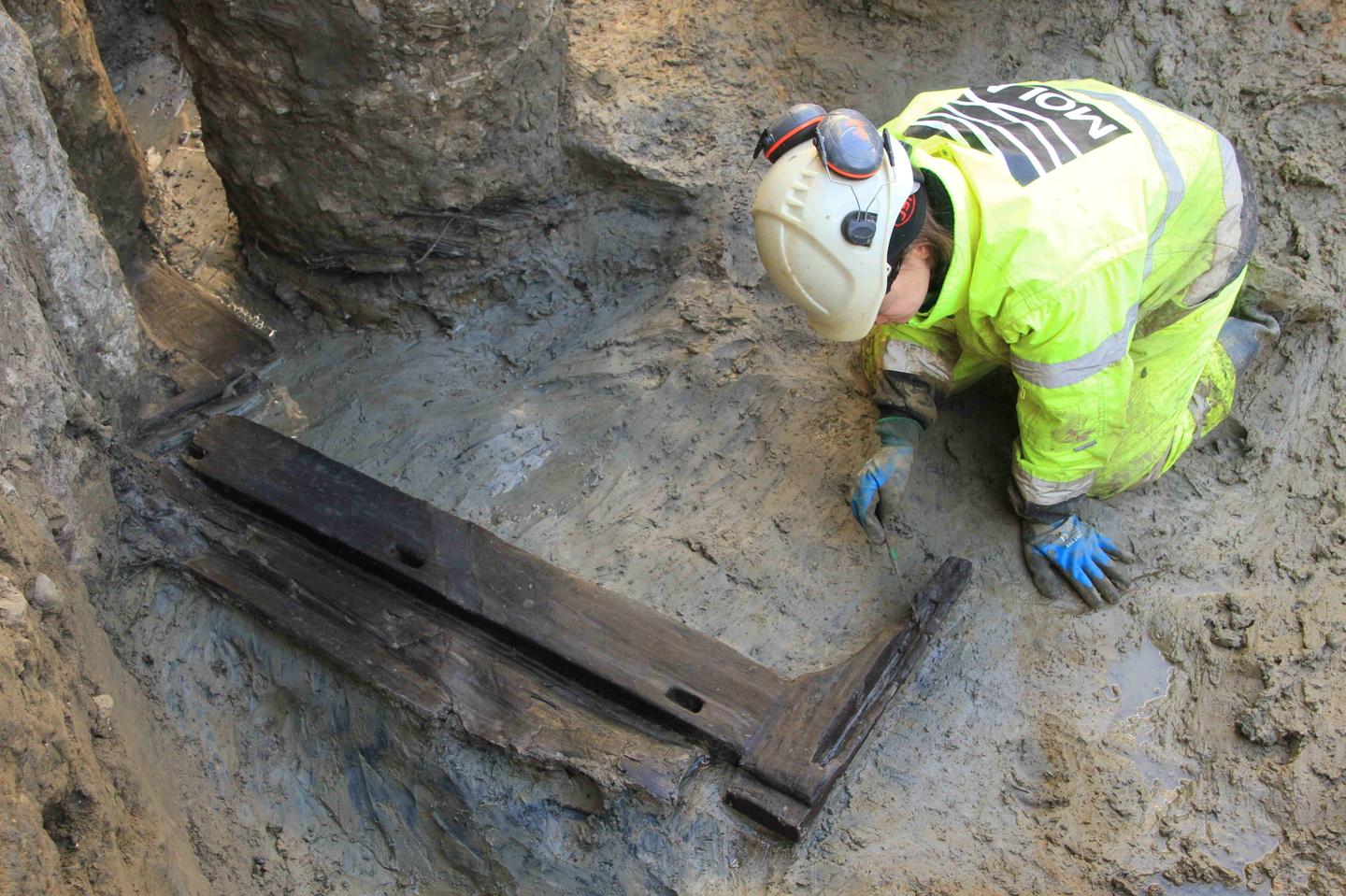Excavations at Holborn Viaduct reveal Complete Roman Funerary Bed

Archaeologists digging in London’s financial district have discovered what they think to be the first complete Roman funerary bed ever to be uncovered in Britain.
Made from high-quality oak, the bed has carved feet, and joints fixed with small wooden pegs. It was taken apart before being placed within the grave but may have been used to carry the individual to the burial. It was probably intended as a grave good for use in the afterlife. Tombstones from across the Roman empire show carvings of the deceased reclining on a couch or bed and eating as if they were alive.
As the funerary bed might suggest, this site was used as a cemetery during the Roman period (AD 43-410). Alongside the skeletal remains, MOLA found personal objects such as a glass vial and high-status jewellery with jet and amber beads, a decorated lamp. The design on the lamp is an image of a defeated gladiator believed to be dated to the very early Roman period in Britain, between c. AD 48-80.
Heather Knight, our Project Officer explains: “We know the Romans buried their dead alongside roads, outside of urban centres. So, it was no great surprise to discover burials at this site, which during the Roman period would have been located 170m west of the city walls and next to the major Roman road of Watling Street. However, the levels of preservation we’ve encountered – and particularly uncovering such a vast array of wooden finds – has really blown us away.”
It’s very unusual to discover wooden objects on archaeological sites, but because this site is on the banks of the River Fleet, they have been preserved in the damp mud.
Main Image :Copyright MOLA
